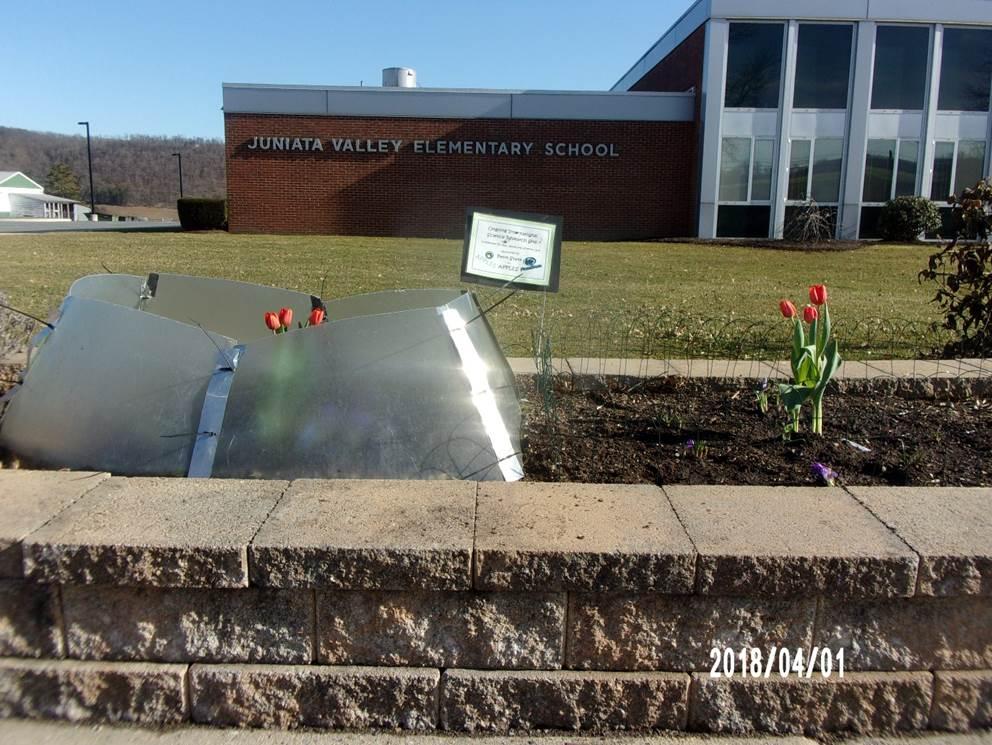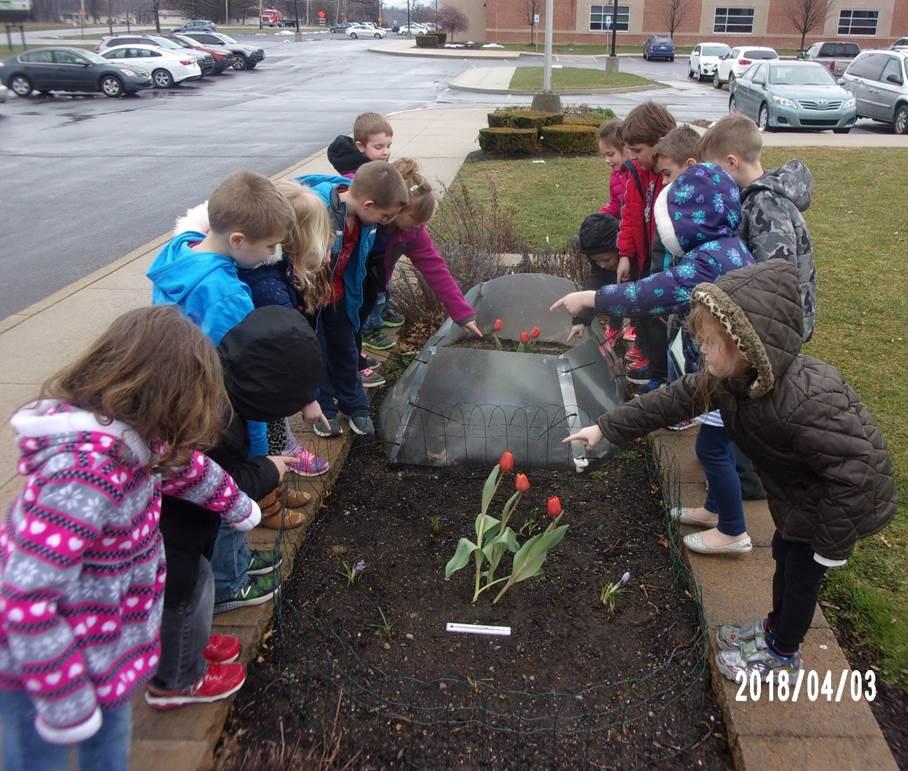Plant Phenology Team
Home › Forums › APPLES Teacher Forum › Plant Phenology Team
- This topic has 2 replies, 1 voice, and was last updated 7 years ago by
 Kristin Joivell.
Kristin Joivell.
-
AuthorPosts
-
January 2, 2017 at 8:36 pm #496
 Kristin JoivellParticipant
Kristin JoivellParticipantFor my work with the plant phenology study, I needed a space to use in the raised garden beds in front of our elementary building. Our school district’s Sustainability Club advisor, Pam Grugan, is in charge of the raised garden beds, so I needed to secure a space for use with her for the plant phenology project. But of course, I first needed to know how much total garden bed space to reserve with her. So I constructed the warming chamber on my own so I could take some measurements.
After constructing the warming chamber, I needed to measure it as it was situated in the raised garden bed to determine what total size plot would be needed for the study–both warming chamber plot and ambient temperature plot.
The warming chamber is approximately 4 feet wide when it is placed in the raised garden bed, so I will need a total of 8 feet for both the warming chamber plot and the ambient temperature plot. I also would like to have a 1 to 2 foot wide gap of unused space between the two plots and a 1 to 2 foot wide gap of unused space on each side of each plot, so I will need to make use of at least 14 feet of the 18 feet available in the raised garden bed. It took some convincing, but the Sustainability Club advisor, promised this space to me for my use in the plant phenology study.
Next, I created signs and purchased a display holder for each to be placed in the reserved location for two reasons–to show visitors to our school that important science work is being conducted here at Juniata Valley and to serve as a reminder to the Sustainability Club advisor that the space is reserved for the plant phenology study. As you can see, I used the Penn State and APPLES logo on the signs and identified the work as “ongoing international science research”. I plan on placing them in the raised garden beds in February or March since that’s when the new top soil delivery is scheduled to be completed for the new growing season.
Since new top soil will be delivered to the raised garden beds in early spring, I definitely don’t want to do plantings for the study before then! Also, the final frost of the season needs to be considered when determining when to place new seeds or seedlings into the plots. Since the final frost is predicted for April, I will need to be ready for the actual plantings in the raised garden beds at that time. But much organization and preparation will need to be completed before then.
Until April, I have a lot of work to do to prepare. As a huge part of the preparation, I need to organize a Plant Phenology Team from the 4th, 5th, and 6th grade students. I plan on presenting the project idea to them at 4th, 5th, and 6th grade level presentations in March when my kindergarten class is at recess. From there, students in those grades can sign up to be part of the Plant Phenology Team using a permission slip that is due by a certain date. After finalizing the team members, the Plant Phenology Team will be scheduled to meet 2 times per week to visit the raised garden beds during the school day. Since the students from the team are not in my classroom, I will need to use my end of the day break while my kindergarten class is at recess for the visits. Due to this scheduling issue, I will need to convince the rest of the teachers on my grade level team that I will need to do all lunch duty periods and not any recess duty periods for March, April, and May. That’s going to take some more convincing!
Finally, I need to create a science journal for use by each member of the Plant Phenology Team so that they can record their data individually, in addition to the data I will be uploading to the APPLES site. Each page will have space for temperature readings (taken with the digital thermometer), sketches of plants, and written observations. These journals will be used by the students for presenting at the Family Science Night on May 10 along with the other data collected by my kindergarten students from the time lapse camera study.
June 19, 2018 at 5:56 pm #703 Kristin JoivellParticipant
Kristin JoivellParticipantOver the two school years for the project, I replicated a Plant Phenology Study in April 2017 and 2018. In this month long study during each school year, the kindergarten students compared and contrasted the growth of tulip and crocus bulbs in warmed and unwarmed plots. Students learned and observed phenological stages, monitored and documented temperatures, recorded data in plant phenology journals, and made inferences about the comparative growth of the plants in the two plots.
Here is the plot in April 2017:
Here are students identifying phenophases in April 2017:
Here is the plot in April 2018:

Here are students identifying phenophases in April 2018:
 July 8, 2018 at 3:34 pm #868
July 8, 2018 at 3:34 pm #868 Kristin JoivellParticipant
Kristin JoivellParticipantAfter undergoing a simple training lesson about identification of phenophases in crocus and tulip plants, students recorded their data in Plant Phenology Journals. Phenophases were represented by simple letter abbreviations with B meaning budding, O meaning blooming, W meaning wilting, and X meaning that the petals had dropped off of the plant completely.
Over the two school years it was interesting to note how easily the students were able to infer why they thought there were differences between the phenophases of the plants in the warmed open top chamber plot and the unwarmed fenced plot. Having photographs of each plot available during these discussions helped students with forming stronger, more evidence based ideas as they compared and contrasted the phenophases noted in the different plots.
-
AuthorPosts
- You must be logged in to reply to this topic.
Recent Comments